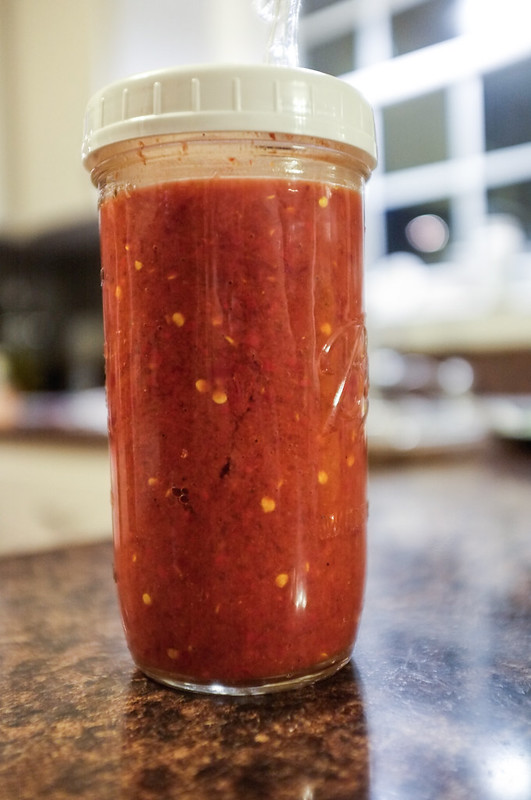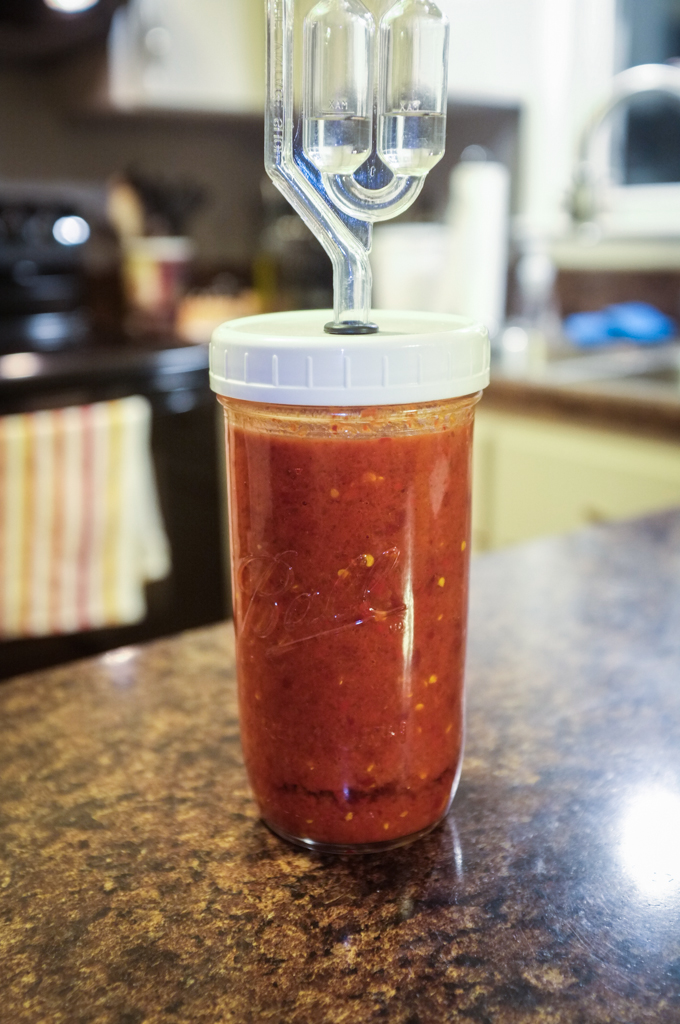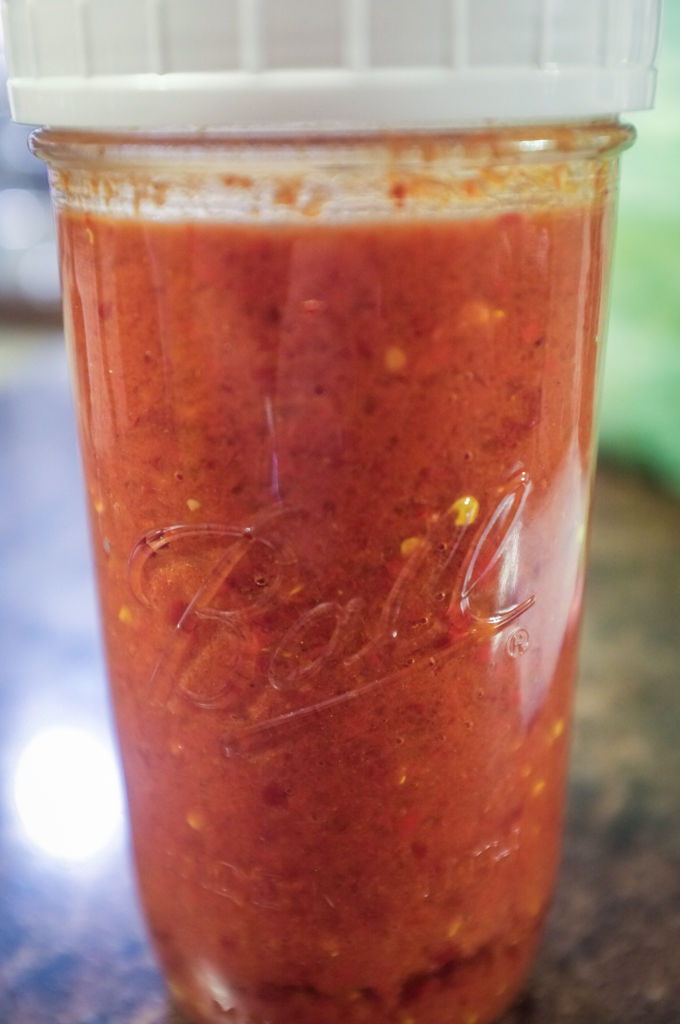Ok so i have a pile of peppers that were quickly wilting as I figured out what to do with them. After doing some reading and asking a few questions I went and built some fermenter lids with airlocks.
Materials:
Instructions:
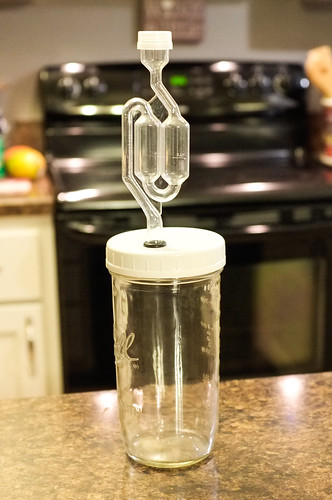
Fermented Hot Sauce by boostdemon, on Flickr
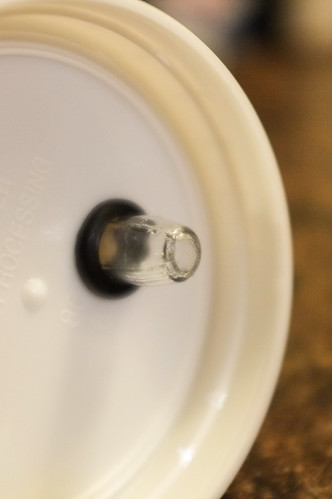
Fermented Hot Sauce by boostdemon, on Flickr
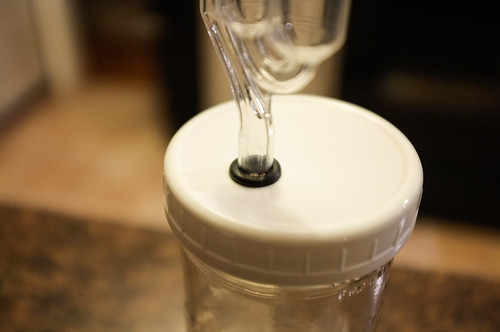
Fermented Hot Sauce by boostdemon, on Flickr
------------------------------------------
The mash I made consists of everything that I had laying around that was red. It made about 2.5 cups of mash from the following ingredients:
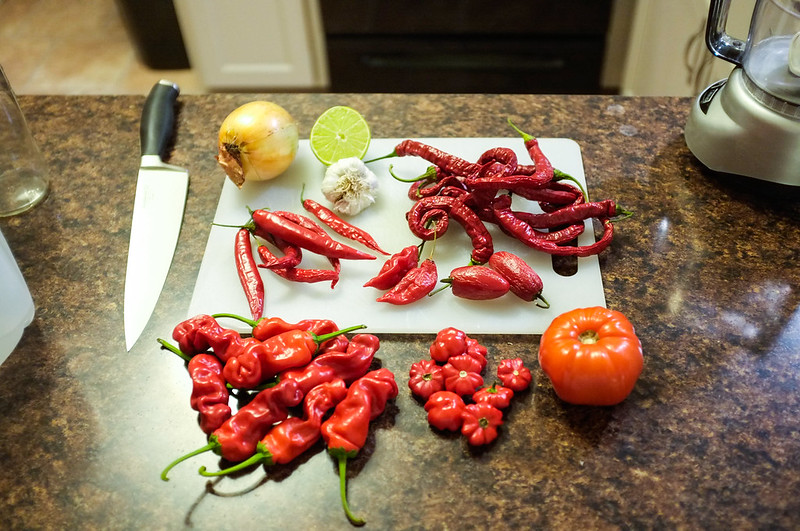
Fermented Hot Sauce by boostdemon, on Flickr
Top row: Vidalia Onion, 1/2 lime juiced, 1 clove of garlic, Cayenne
Middle row: Prik Chi Faa, Paper Lantern Habaneros, Jalapeños
Bottom row: Peter Pepper, Aji Brazilian Starfish, Brandywine Tomato
(the only two I grew are the Peter peppers and the tomato, the rest are from Juanitos Peppers)
Chopped and processed to a mash:
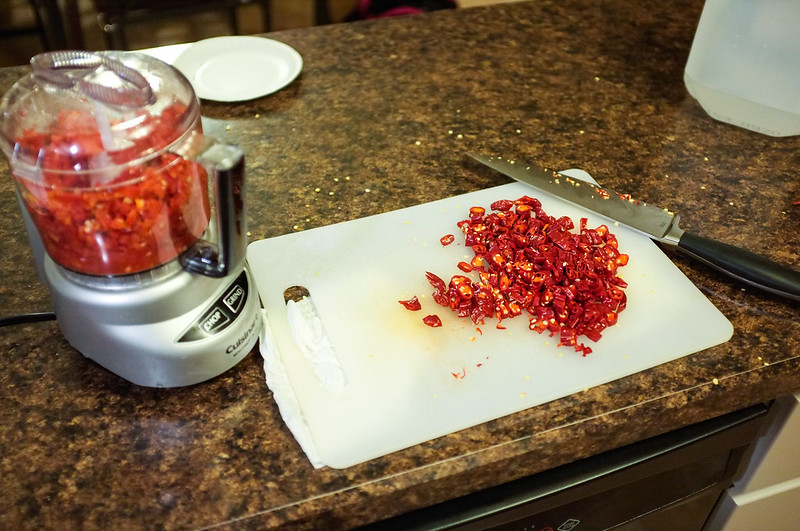
Fermented Hot Sauce by boostdemon, on Flickr
Then I added the mash to a bowl and mixed in the following:
1/2 tsp of Cumin powder
1/2 tsp of Turmeric
1 tsp of Cinnamon
1 tsp of Ginger powder
1 tbsp of Mortons pickling salt
1 cup of distilled water
1/4 tsp of whey from greek yogurt
Filled up the jar and put some distilled water in the airlock to the max fill line.
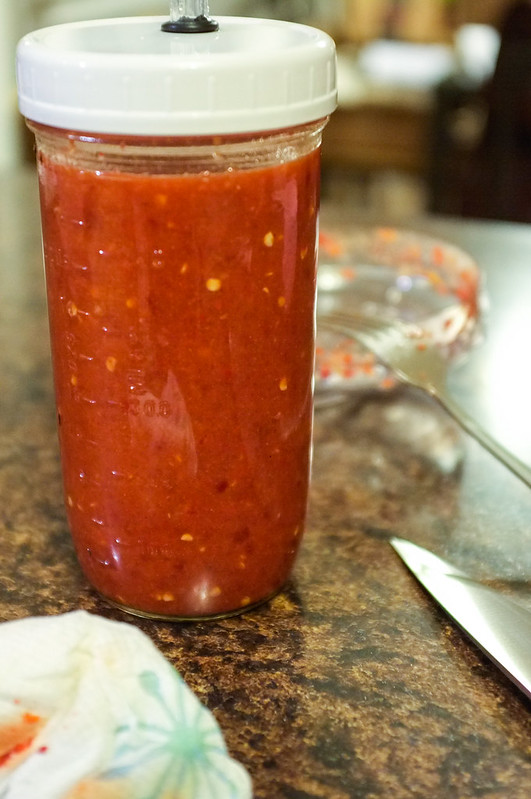
Fermented Hot Sauce by boostdemon, on Flickr
Now I just wait to see if I grow lactobacillus or mold!
Checked it this morning and the water in the airlock is mostly in the bottle side of the trap - to me that indicates a vacuum in the jar? that normal for just starting out or should I redo it now while its still fresh?
Materials:
- Ball wide-mouth plastic lids - 8 for $6.48
- Double bubble air locks - 3 for $5.99
- 3/8" ID electrical rubber grommets - $0.42 each at hardware store
Instructions:
- Drill 1/2" hole in plastic lid
- Stuff grommet into hole
- Smooth out seam on airlock tube with razor blade or sand paper so it seals well
- Put some olive oil on the grommet and slide the airlock through

Fermented Hot Sauce by boostdemon, on Flickr

Fermented Hot Sauce by boostdemon, on Flickr

Fermented Hot Sauce by boostdemon, on Flickr
------------------------------------------
The mash I made consists of everything that I had laying around that was red. It made about 2.5 cups of mash from the following ingredients:

Fermented Hot Sauce by boostdemon, on Flickr
Top row: Vidalia Onion, 1/2 lime juiced, 1 clove of garlic, Cayenne
Middle row: Prik Chi Faa, Paper Lantern Habaneros, Jalapeños
Bottom row: Peter Pepper, Aji Brazilian Starfish, Brandywine Tomato
(the only two I grew are the Peter peppers and the tomato, the rest are from Juanitos Peppers)
Chopped and processed to a mash:

Fermented Hot Sauce by boostdemon, on Flickr
Then I added the mash to a bowl and mixed in the following:
1/2 tsp of Cumin powder
1/2 tsp of Turmeric
1 tsp of Cinnamon
1 tsp of Ginger powder
1 tbsp of Mortons pickling salt
1 cup of distilled water
1/4 tsp of whey from greek yogurt
Filled up the jar and put some distilled water in the airlock to the max fill line.

Fermented Hot Sauce by boostdemon, on Flickr
Now I just wait to see if I grow lactobacillus or mold!
Checked it this morning and the water in the airlock is mostly in the bottle side of the trap - to me that indicates a vacuum in the jar? that normal for just starting out or should I redo it now while its still fresh?
As an Amazon Associate we earn from qualifying purchases.


